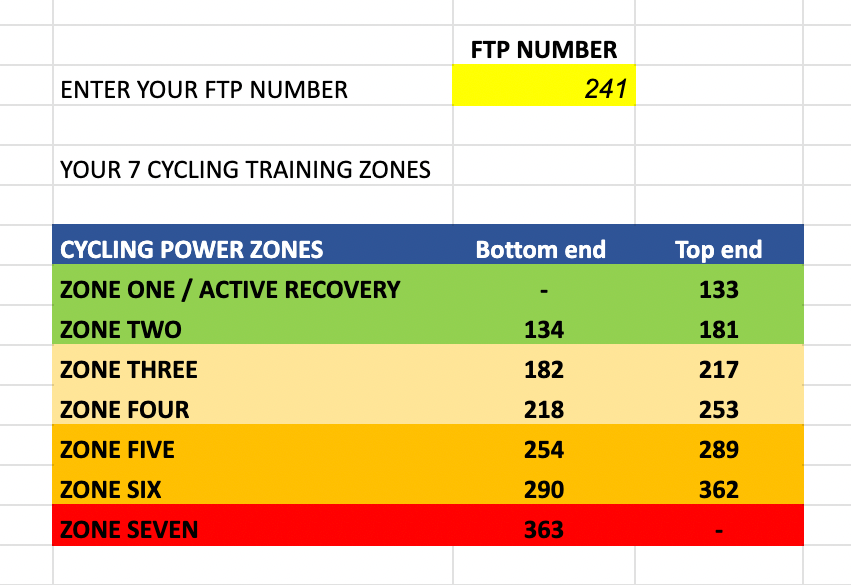A common question asked by many cyclists — here’s what you need to know.

Does zone 2 training feel like a waste of time? Are you spending hours on the bike riding slower than usual and wondering if all that time in the saddle is worth it?
Training at zone 2 is actually very beneficial for aerobic capacity and your general efficiency as a cyclist. When you’re consistent with it, it can
- Increase your mitochondria (ride further with less effort)
- Facilitate musculoskeletal adaptations, such as increasing the volume of slow twitch muscle fibres
- Increase the density of the capillary network surrounding muscle fibres
- Expand the left ventricle in the heart, resulting in increased stroke volume
These are only a few of the benefits cycling at zone 2 provides riders.
Instead of thinking it’s a waste of time, repeatedly dipping in and out of zone 2 in your training rides, you need to stick with it and trust the process to see the above results.
The remainder of this blog post will further explain why zone 2 training is not a waste of time and, instead, is a very useful — and perhaps the most important training zone.
What is zone 2 training cycling?
Zone 2 training is low-moderate intensity cycling. It’s often described as a “conversational pace.”
And while at first, it may seem counterintuitive, riding at a lower intensity can be very beneficial, yielding many physiological benefits (as mentioned above).
What you need to be aware of is that these physiological adaptations — achieved at a zone 2 level — can not be achieved to the same degree, when you ride at intensity.
According to Dr Iñigo San Millán (coach of Tadej Pogačar):
Once you head into lactate threshold territory (i.e. any intense work on the bike), you start producing a lot of lactate, with the net result being an increase in catecholamines.*A type of neurohormone (a chemical that is made by nerve cells and used to send signals to other cells). Catecholamines are important in stress responses.
This ultimately means a shift in hormonal and metabolic responses while on the bike. So after pushing up a hill and producing this chemical reaction, it might take you a while (20-30mins) to get back to your base aerobic state. It’s like a shock to the system.
In other words, working exclusively in zone 2 for certain sessions is very important for overall cycling performance. Let’s discuss this in more in the remainder of this post.
How long does it take to see results from zone 2 training?
We would recommend a build phase of 4-8 weeks of zone 2 training to receive the maximum benefits.
During this time, spend 60-80% of your training in this zone.
That doesn’t mean it’s the only training you will do — but it should make up the bulk of your training, especially before going into the harder threshold and anaerobic efforts later in your plan or season.
Even after building a base, you should always include zone 2 in your training (more on this at the end of this post). This intensity is perfect for long rides and recovery spins.
How long should I spend in zone 2 during a workout?
You don’t need to go out and ride for 4 hours in zone 2 to start seeing benefits.
Instead, start with 1-2 hour zone 2 rides. Build these up slowly over a number of weeks to see tangible results and training adaptations.
You can also build up your long ride to 4-5 hours, staying in zone 2 for the entire ride. Add an extra 1-2 shorter zone 2 rides during the week.
But what’s most important here is that you remain consistent with your training. Training the right zones over a long period will give you the best results.
How do you calculate your zone 2 cycling?
There are many power zone calculators out there. You enter your FTP number, and they tell you how many watts to ride to stimulate your desired zone and training adaptations.
Below is an example of cycling power zones based on an FTP of 241. You can see that zone 2 power is between 134 and 181 watts.
Ride between these two numbers (watts), and you’ll stimulate zone 2.

You can also use your estimated max HR (heart rate) to calculate your training zones. Typically though, power is more accurate.
This is because HR takes a while to catch up to your effort — it’s known as “cardiac lag.” Although this only really becomes more evident when tackling harder efforts, sprints, and climbs.
Base training at zone 2 should be relatively easy and a stable effort anyways. So this should not be an issue.
But we’d still suggest training by power if possible or using a combination of both methods for the best results.
Below is the heart rate zone data for a cyclist with a max HR of 206. They should keep their heart rate between 124 and 144 to stimulate zone 2 adaptations.

Download the RCA cycling power zones calculator and find your zone two power and heart rate zones.
Zone 2 training should be performed at 55% to 70% of your FTP or 60-70% of your maximum heart rate.
Zone 2 training tips – advice to get started
Many cyclists do zone 2 training wrong.
For starters, a common fault is not applying constant pressure on the cranks. Instead of riding hard and then not pedalling on the downhills, aim to keep your cadence and power steady.
This ensures you remain in zone 2 (or any other desired zone).
Even if, say, when climbing, you pushed into zone 3 by accident, it’s better to keep constant pressure on the cranks when descending vs. stop pedalling and letting the bike do the work.
The former is a much more effective way to train.
Below is an example of inconsistent power on the cranks at zone 2:

Conversely, the graph below shows constant pressure on the cranks:

As you can see the HR and power data are a lot more stable — this helps you get the most out of each session.
Second, a lot of cyclists overthink zone 2 training — they think it’s not working because they’re going so slow.
Well, that’s actually good news. If you think it’s too easy, chances are you’re doing it right.
It’s these slow and steady efforts that compound and generate the desired physiological adaptations.
A big part of zone 2 training is trusting the process — you have to go slow to go fast.
Do I need to do zone 2 training throughout my whole training block?
Yes you do! Zone 2 training is not only important in the base training or foundation phase of your training block, but in every block of training.
In the first phases of your training block, you focus more on base training to build a big foundation of cardiovascular strength, mitochondrial density, metabolic efficiency etc.
Once these adaptations are established, and your body can handle high-intensity training, you start to build that into your training closer to your main event.
During that building and peak phase, in fact, in every phase, zone 2 training is a critical part of your training to maintain the benefits stated above. It also provides a bridge between more intense sessions and gives your body a chance to adapt to the high-intensity training.
And if neglected, the majority of your training will be high-intensity and you may fall into the overtraining trap.
So never neglect zone 2 training, no matter what training phase you are in!
So is zone 2 training worth it?
Yes! Zone 2 training is absolutely worth it.
It’s one of the more common and useful training zones, used in all phases of training, and is especially powerful in the base training phase, i.e. the beginning of a training block.
Key takeaways:
- Build your aerobic base with zone 2 training
- Continue zone 2 throughout all training phases
- Calculate your power & HR zones using the RCA calculator
- Trust the process and stick at it for the best results
And if you’re still in the “it’s a waste of time” bucket, we suggest reading out zone 2 training for cycling guide. In this blog post, we explain the scientific benefits in more detail, how to perform your first zone 2 ride, and more.
References:
- Kamga, C., Krishnamurthy, S. and Shiva, S., 2012. Myoglobin and mitochondria: a relationship bound by oxygen and nitric oxide. Nitric Oxide, 26(4), pp.251-258.

